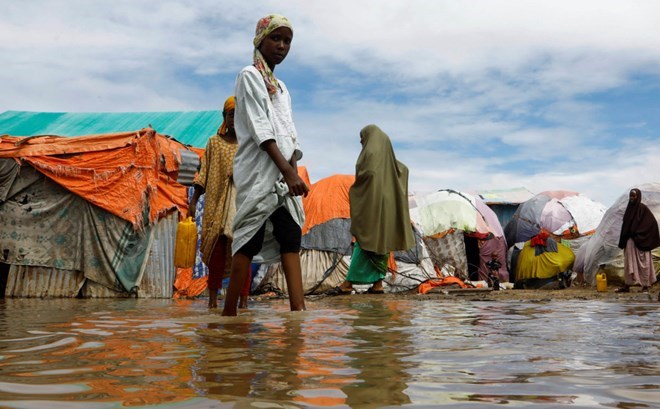Heavy rains and flash floods since mid-April have swept across parts of Somalia, affecting more than 45,000 people and claiming at least four lives, according to a new situation report by the United Nations Office for the Coordination of Humanitarian Affairs (OCHA).
The report, issued on April 30, details the deaths of two children and a woman in the Iskushuban district of Bari region, along with a 12-year-old girl in Baidoa. The worst-hit areas are in Puntland, particularly the Bari and Nugaal regions.
In Hirshabelle State, the Shabelle River burst its banks on April 28 in Jowhar district, triggering severe flooding that displaced approximately 6,120 people across five villages. The flooding submerged an estimated 11,000 hectares of farmland in Gaafaay, Muryaale, Beeyxaaw, IJI, and Nuurkaay, damaging homes and crops in one of Somalia’s most agriculturally productive regions. Many families are now sheltering in makeshift camps on higher ground, facing acute shortages of food, clean water, and medical care.
In Galmudug State, flash floods on April 29 inundated parts of Gaalkacyo town, affecting over 9,570 internally displaced persons (IDPs) living in 14 camps in both the northern and southern sections of the city. While the rains have provided some relief after six months of prolonged drought by replenishing water sources and pastureland, they have also exacerbated vulnerabilities among displaced populations.
Meanwhile, the FAO-managed Somalia Water and Land Information Management (SWALIM) project forecasts light to moderate rainfall over south-central Somalia, with dry conditions expected in Somaliland and Puntland. River levels along the Shabelle River are projected to rise moderately but stay below natural flood thresholds, although human-induced flooding remains a concern downstream of Jowhar. The Juba River is expected to fluctuate but remain below flood risk levels.
Despite growing needs, Somalia’s 2025 Humanitarian Needs and Response Plan is only 10 percent funded as of April 30. OCHA is appealing to partners to urgently scale up emergency support—particularly shelter, sanitation, and relocation assistance—for communities already grappling with displacement and destruction, according to the report.


